Table of Contents
Looking to cultivate blueberries, but the limited space in your garden holds you back? You’re in luck! You can easily grow blueberries right at home on your front porch or backyard by planting these delicious fruits in pots. This guide will detail the process of planting blueberries step by step.
We’ll begin with choosing the best time to plant and finding the right site, followed by measuring out the proper spacing and depth for planting and supporting your plants. Discover how to maintain your blueberries, including crucial tips like protecting your crops against bird damage and providing sufficient water and light. Our step-by-step guide will help you understand fundamental factors like soil pH levels that are best for your plant’s growth, along with tips on fertilizing specifically for blueberry plants.
Benefits of Growing Blueberries in Pots
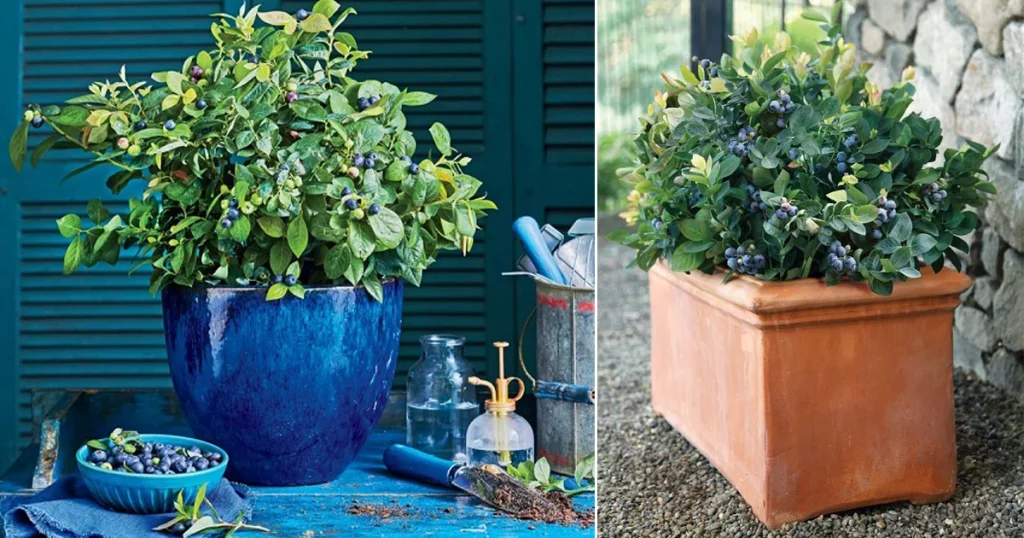
There are several benefits to planting your blueberries in pots or containers, especially if you don’t have a large garden or landscaping area:
- Accessibility: Having your blueberries growing in pots on your front porch allows you to relocate and move them whenever needed, such as in the event of a heavy storm, you can easily move your pots inside and protect your produce.
- Space-saving: Growing blueberries in pots is an excellent option for those with limited space, such as people who live in apartments or those with limited lawn areas. This lets those living in bustling cities enjoy homegrown berries right from their balconies.
- Pest control: It is considerably easier to have a controlled environment when you grow your plants in small pots instead of large farms. Small pots allow you to zero in on minute details on each plant & leaf and eliminate any spread of pests in the very early stages.
- Soil Control: Blueberry plants need specific soil conditions, and growing them in pots lets you control everything from pH levels to fungal growth. This allows you to micro-manage the soil condition.
- Variety: Growing blueberries in pots allows you to experiment with different varieties and cultivars, as you can easily move them around and adjust their environment as needed. With this, you can pick and choose whichever variety suits your climate conditions and schedule.
- Better Drainage: Waterlogging is one of the biggest adversaries of your blueberry plant. You can easily avoid this issue when you plant your blueberries in pots, unlike in large landscapes where you’d have to develop and maintain complicated drainage systems.
Moreover, harvesting your fresh berries is much easier with potted blueberries, as the fruits are within easy reach for plucking. In conclusion, growing blueberries in containers is a fantastic option for anyone who wants to enjoy fresh, plump berries, even in a limited area.
Choosing the Right Pot for Blueberries
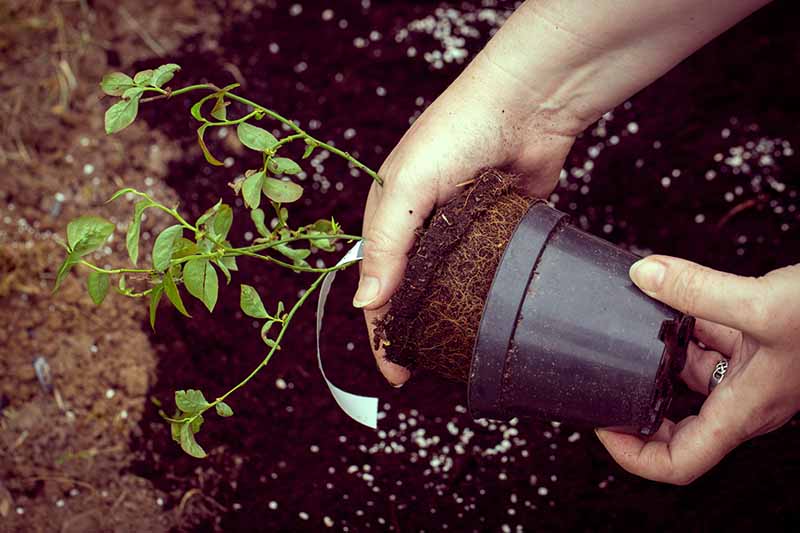
It is important first to choose a pot that suits your requirements, and this can depend on several conditions, such as the variety of blueberry plants you are planning to grow, your area’s climate, the amount of space you have, and how many plants you plan to grow:
1. Blueberry Variety
From High bush to lowbush, each blueberry variety has different necessities, and the size of your pot will be one of the important ones. If you’re planning to grow High bush blueberries, then you will need a bigger container since these plants grow up to lengths of 7 to 8 feet making them absolute behemoths when it comes to their root growth.
On the contrary, the low-bush or half-high plants only grow up to two to three feet in height and don’t take up much space, so even a pot of smaller size will do in their case.
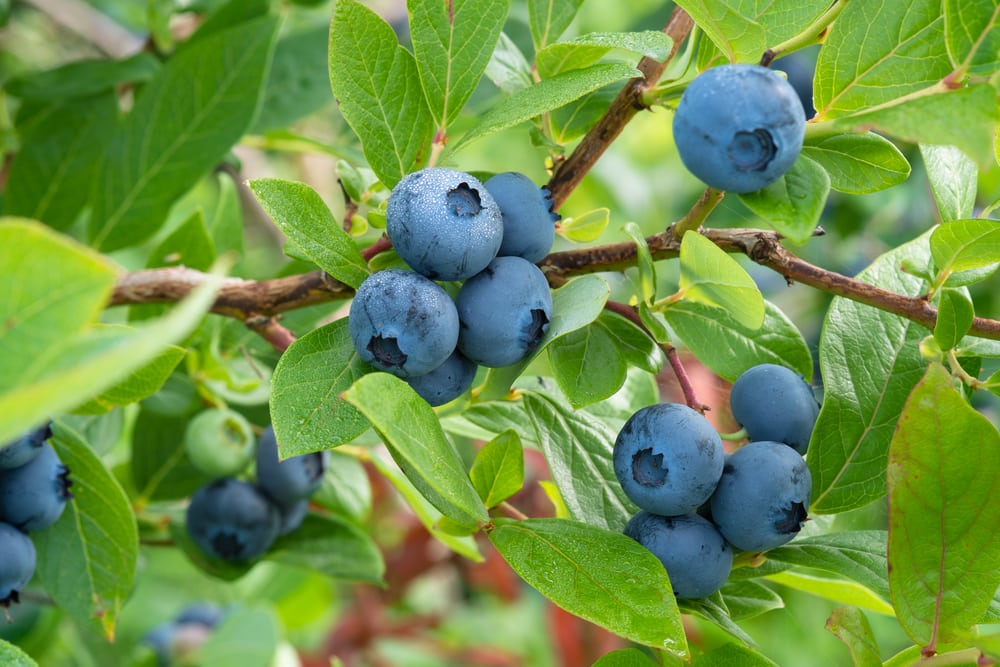
2. Material of Pot
When it comes to the health and growth of your plants, the material of the pot can indeed have an impact. For instance, terra cotta and other porous materials may dry out more quickly than plastic or glazed ceramic pots. Meaning they will require more frequent watering to maintain moisture levels to keep plants growing. Therefore, if you live in a hot or arid area, a plastic or glazed ceramic pot will retain moisture longer and help you avoid constant watering. This will also help you keep your blueberries healthy.
On the other hand, if you live in an area like Zone-4, which has a moderate to cold climate throughout most of the year, then a terracotta pot might be the perfect choice for you since they allow for better air circulation around the roots meaning your plants don’t get overwatered and maintain healthy growth.
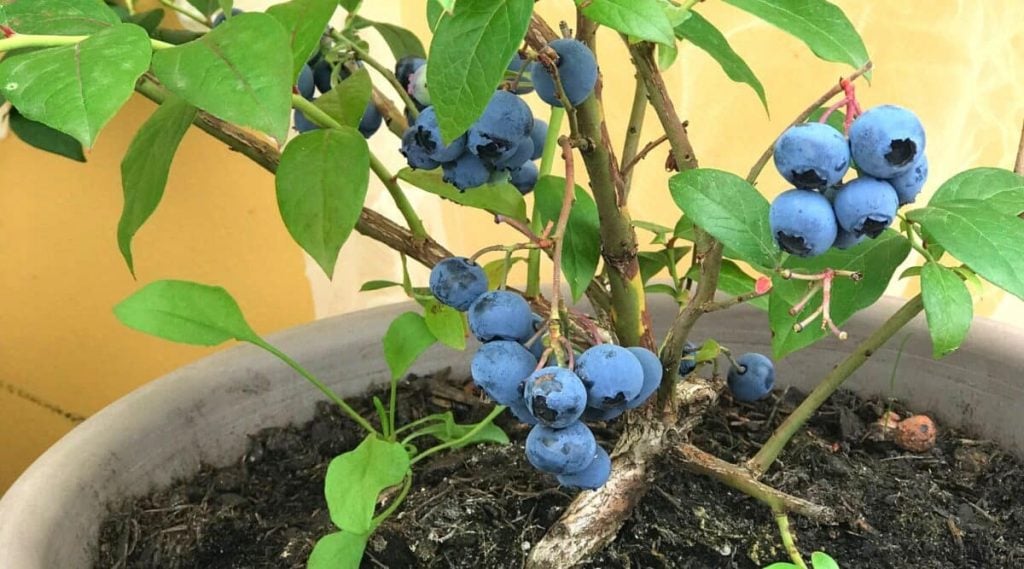
3. Proper Drainage
Proper drainage can sometimes dictate the result of your gardening efforts which is especially true for blueberries that require soil that retains moisture but doesn’t get waterlogged. Make sure that the pot you choose has enough holes at the bottom of the pot so that any excess water can escape from the bottom. Excess water in the soil can lead to several issues, like the development of fungal infections that attack the plant and even root rot which eventually leads to the plant’s death.
Keep in mind that different blueberry cultivars have different moisture needs; thus, pick a pot with that consideration. The soil you use also affects the drainage, and you can either prepare the potting soil at home or buy ready-made all-purpose potting soil from a certified vendor.
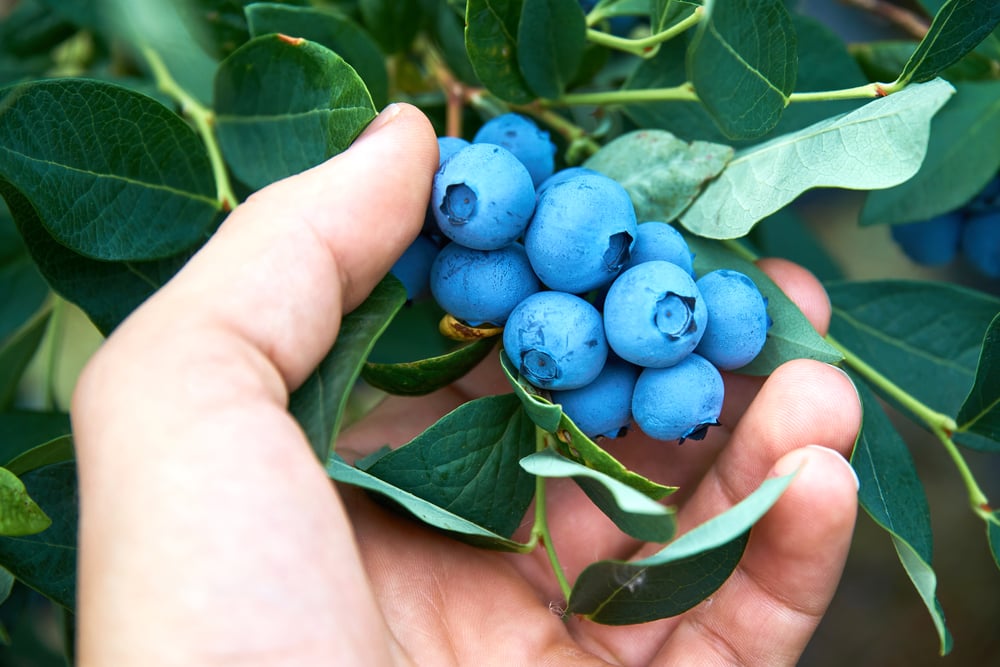
Types of Blueberries to Grow in Pots
Growing blueberries in pots can be an interesting and fun experience for many. However, to successfully grow blueberries, choosing the right variety of blueberry plants is essential. The key to success lies in the careful selection of the blueberry cultivar that will thrive well in your area’s climate and environment. Let’s look at some variants that you need to consider:
1. Bluecrop
First discovered in New Jersey, Bluecrop is the most popular cultivar of blueberries. This variety grows belongs to the High-bush category and generally grows up to the height of 6 feet. What makes this variety so loved is its firmness which makes it the perfect addition to anything from your breakfast cereal to your baked treats. You can harvest them between July to late August and enjoy these delicious berries packed with nutrients such as Vitamin C, antioxidants, and fibres.
2. Duke
First introduced in 1920, the Duke blueberry is one of the oldest variants of the blueberry available on the market. They are known for being hardy plants which can give a tough challenge to most difficulties like cold weather and slight overwatering. The Duke blueberry is both tasty and rich in vitamins, making it a smart option for snacking or using in dishes. Besides being tasty, the Duke blueberry is filled with antioxidants, which makes it a nutritious option for snacking too.
3. Chandler
These jams are perfect for making jams and spreads owing to their exceptionally sweet taste. These plants also grow up to 6 feet in height and 4 feet wide but produce way more berries than most varieties on this list, with each bush capable of producing up to 20 pounds of berries in a single season. These berries are known to fight inflammation, boost immunity, and improve eyesight. Apart from their nutrition and yield, these berries are also popular for their aesthetic appearance and Instagrammable look.
4. Patriot
The crown jewel of this blueberry crop is its hardy nature. Its extreme tolerance to climate changes allows it to thrive in any environment, including the cold shivering winters of the UK, when most blueberries need extra care or become dormant. Other than its hardy nature, the Patriot is perfect for sweet tooths who like to snack on something sweet and sour in their free time. Its berries are large and harvested in June or early July, which gives you access to blueberries first and makes your garden the envy of the locality.
5. Aurora
Packed with Vitamin C, K, and antioxidants, this variant of blueberries serves many purposes, and one of those is being the perfect snack for heart patients. It is proven to help reduce inflammation and improve brain function. One lesser-known fact about Aurora plants is that they are a cross between Bluecrop and Berkeley variants, which makes them extra hardy and allows them to breeze through extreme climates in Zone 5 and even in Zone 7. They are also super delicious, with a subtle tangy kick to them, thanks to which they are traditionally used in salads and smoothies.
Watering, Fertilizing, and Pruning Blueberry Plants in Pots
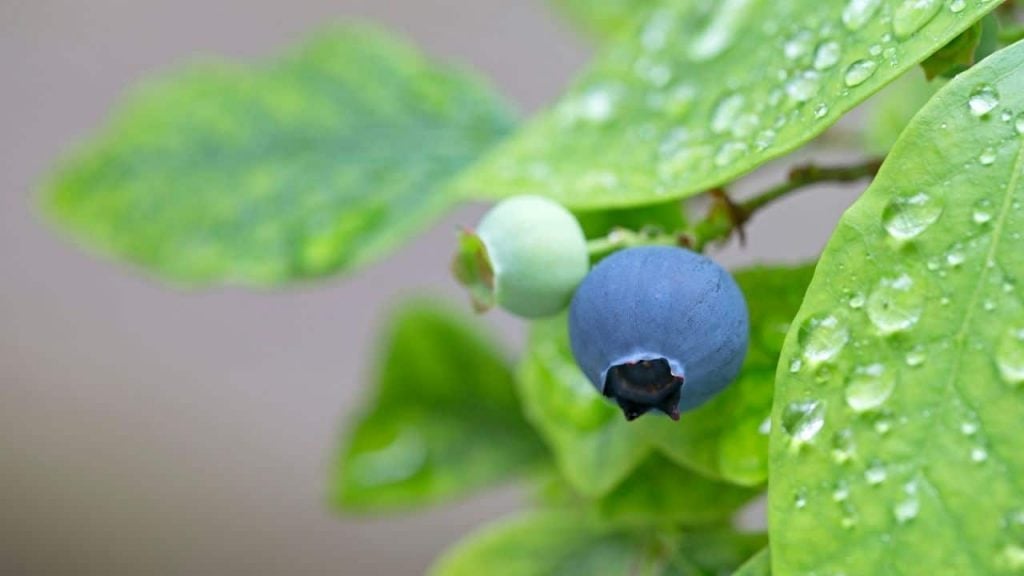
Before we go expecting fruits and making blueberry smoothies, it is important to learn how to take proper care of your plants which will help them develop and flourish:
1. Watering
Blueberries require consistent moisture throughout the growing season. Watering should be done deeply but infrequently to avoid waterlogging the soil, which can lead to root rot. It’s best practice to water your plants in the morning to allow the leaves to dry off before the sun raises the heat. You can water them thoroughly, but how much water your plant needs can vary with your weather conditions and soil type.
2. Fertilizing
Blueberries are delicate plants and need regular fertilization. You can feed your blueberries a balanced, slow-release fertilizer with a nitrogen-phosphorus-potassium (NPK) ratio of 10-10-10 or 12-12-12 before new growth starts. It is recommended to do a second round of fertilization in early summer after fruits set in so that your plant has enough nutrients to grow delicious fruits. You can also use organic fertilizers such as compost and manure.
3. Pruning
Blueberries should be pruned annually to maintain plant health and encourage fruit production. Pruning should be done in late winter or early spring before new growth appears. It is essential to remove any dead or diseased branches regularly. Getting rid of low-lying branches that can potentially come into contact with the ground reduces the risk of harm from pests or diseases. Thin out the interior of the plant to allow for better air circulation and sunlight penetration.
4. Mulching
Blueberries benefit from a layer of mulch around the base of the plant to conserve moisture and stop weed growth. Pine needles, sawdust, and bark mulch are all good options. Avoid using hay or straw because they can become breeding grounds for fungal diseases.
5. pH level
Blueberries thrive in acidic soil, so make sure that you are able to maintain a pH level between 4.0-5.5. You can use soil pH testing kits to ensure that your soil’s pH level is well maintained. If the pH levels are too high, then you can use sulfur or soil pH maintenance products.
6. Pest Control
Most blueberry cultivars are easy targets for aphids, mites, and fruit flies. Regular inspection and early detection are important to prevent infestations. Insecticidal soaps, neem oil, and horticultural oils can be used to control pests. Blueberries can also be protected from birds by using netting or reflective tape.
Blueberry Recipe Ideas

1. Blueberry Muffins
What is better to have with your cup of tea than a blueberry muffin? Just add flour to your eggs and combine the mixture with a dash of sugar, baking soda, and milk. Don’t forget to add your muffins to the mix, and when done, bake the mix until golden brown.
2. Blueberry Cheesecake Bars
This is an easy recipe for anyone looking for a snack. Just drizzle blueberry compote over a cracker and top with cream mixed with sugar and vanilla extract.
3. Blueberry Salad
To make a tasty and healthful salad, combine baby spinach, sliced strawberries, crumbled feta cheese, and blueberries in a dish, then drizzle with some balsamic vinaigrette.
Growing the Juiciest Blueberries in Pots!
Growing blueberries in pots is a convenient and rewarding way to experience gardening, be it from your balcony or front porch, while getting delicious blueberries as a reward. This process not only allows for convenience but also gives you the best results, lets you experiment with different varieties, conserves space in your house, helps keep insects at bay, and meets your health goals.
The advantages of growing blueberries are innumerable, and they are only amplified when you grow blueberries in pots, so go over this guide, and you’ll learn all the necessary steps and tips to grow healthy blueberry plants in pots, starting from choosing the right pot to maintaining the right soil conditions and pest control.
Learning this will ensure you get the best result in your blueberry growing endeavour no matter where you are.

![How to Grow Blueberries in Pots [UK] Tips When Growing Blueberries In Pots](https://www.thearches.co.uk/wp-content/uploads/Tips-When-Growing-Blueberries-In-Pots.jpg)



